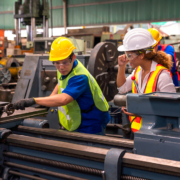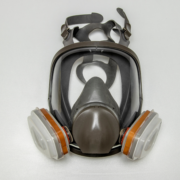How Home Care Workers Can Keep Both Themselves And Their Patients Safe
Unquestionably, home care workers are very special people. Their vocations require them to be devoted to providing support and assistance. Of course, home care workers most often help individuals who contend with varying health and mobility issues. Older adults, who wish to live in place, commonly summon the support of home care workers. It goes without saying that such professionals must take great measures to keep both themselves and their patients safe.
De-clutter the home to prevent slips and falls.
Arguably, the most important step a home care worker can take is removing any and all obstacles from the walkways in the home. Especially when caring for seniors and people with disabilities, it’s vital to eliminate all tripping hazards. The Public Health Agency of Canada reports that a third of older adults fall each year.
“In Canada, falls are the leading cause of injury-related hospitalizations and injury deaths among people aged 65 or older,” informs their website, “Injuries from falls reduce older adults’ quality of life, increase caregiver demands, and precipitate admissions into long-term care. The cost of treating fall-related injuries is high. As the baby boom cohort ages, by 2040 older adults are projected to make up close to one-fourth of Canada’s population.”
Don’t bite off more than you can chew.
Taking on more than you can handle is a benefit to neither yourself nor your care recipient. A home care worker’s responsibilities can include bathing and dressing; changing the bed sheets; doing the laundry; grocery shopping; running errands; and preparing meals. With so much to take on, a caregiver can often try to do too much. This is certainly true for home care workers who have to physically assist their care recipients with mobility.
“Back injuries from lifting or moving patients are one of the biggest risks to home health aides, nurses and other home health workers,” points out Megan Malugani of the Monster job site, “To help prevent such injuries, some home health agencies use a buddy system that allows two workers to team up to provide care for heavy or hard-to-transfer patients.”
Wear an N95 mask when around the care recipient.
It’s easier to spread disease in indoor settings. Naturally, this is why mask mandates were enforced throughout the first two years of the COVID-19 pandemic. While most restrictions have been lifted, it’s sensible to continue to practice N95 mask-wearing to avoid the potential spread of disease. This is especially important for home care workers if either they or their care recipients are experiencing any cold symptoms.
The Public Health Agency of Canada recommends wearing a mask in public indoor settings even if it’s not required in a particular community or setting. “It’s especially important to wear a mask if you’re at risk of more severe disease or outcomes; around others who are at risk of more severe disease or outcomes’ visiting a group living setting; (or) in a crowded or poorly ventilated setting,” says their site.
How can you be sure your N95 mask is protecting you?
At MaskFit Plus, we proudly offer mask fit testing under Occupational Health and Safety (OHSA). We use the Qualitative Fit Testing (QFLT) approach. This regulated certication process ensures one has the right fit for their own face. Our team would be happy to visit your site to offer our Client Onsite Group Mask Fit Test Sessions. The areas we service include Toronto, Mississauga, the Greater Hamilton area, Brampton, Kitchener/Waterloo, Cambridge, Vaughan, Richmond Hill, St. Catharines and Niagara Falls.
To learn more, please don’t hesitate to give us a call at 289-643-6222 or fill out the form on our Contact Us page!







Leave a Reply
Want to join the discussion?Feel free to contribute!